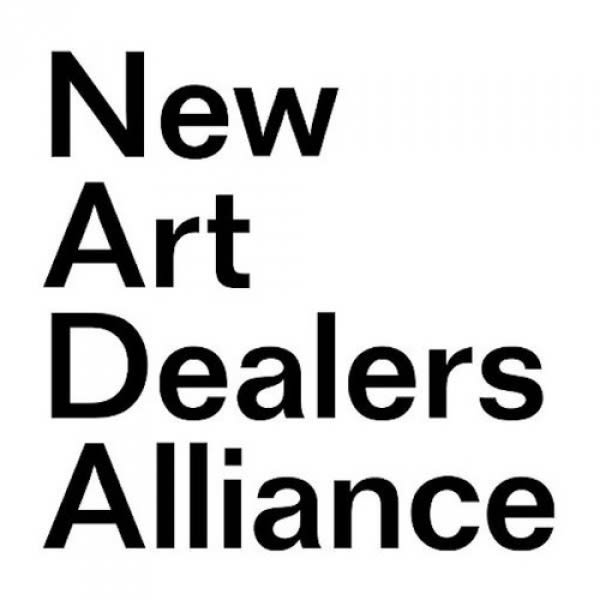In Gallery 1, Goldfinch is pleased to announce "Good Hearts," our second solo exhibition with Taiwanese artist G.E. Liu (b. 1995, Hualien, Taiwan), featuring new and recent silk paintings and tapestries that celebrate love while satirizing the ways in which commodity culture manufactures our ideas and expectations of romantic desire.
Borrowing stylistically from the visual language of shōjo manga (a genre of Japanese manga and anime aimed primarily at teenagers and young women), Liu builds mythological worlds populated by East Asian female characters with dark flowing hair, sinewy limbs, and ruby-red, heart-shaped lips that pout, grimace, or grin maniacally. Some suck purply boba drinks through plastic straws or spew crimson flowers from their mouths like vomitous garlands; others have wings and bare their teeth like demon faeries. These creatures, notes Liu, are “a hybrid of cuteness and the grotesque,” whose pale, ghostly faces, twisted smiles and distorted figures “contend with but also embrace the stereotypes that contribute to the ornamentalizing of East Asian women's bodies.”
Liu made many of the works in “Good Hearts” using two separate layers of silk stretched over a wood frame and backing board, which adds depth and complexity to her compositions while also emphasizing their innate theatricality. The top layers typically depict figures in action, while the lower ones, placed several inches behind like backdrops, depict hazy mountain ranges. This double screen effect enhances the painted illusion, but it also breaks it by calling attention to the painting’s artifice as a constructed object.
The characters in Liu’s latest body of paintings and tapestries are directly influenced by Liu's interest in the work of Jacques Lacan, the French psychoanalyst who expanded upon Freud’s theories of the unconscious by prioritizing the role that culturally shared languages, symbols and ideologies – “the symbolic order”—play in structuring thought and, importantly, our experience and understanding of desire. Desire, Lacan tells us, springs from an emptiness or “lack” that can never be satisfied, because the lack is regenerated almost as quickly as it fulfilled. (You might think of it in terms of our compulsion to endlessly refresh our Instagram feeds in hopes of seeing our “likes,” emblematized by those coveted hearts, increase in number).
Lacan and the generation of post-Lacanian analysts who followed him stress that desire (which is different from sex drive) is neither natural nor innate–it is a social fabrication, a compensatory compulsion that human society constructs and is in turn constructed by, consumes and is consumed by, like the snake swallowing its own tail. This is where commodity culture comes directly into play. Consider the beauty industry, which bombards women in particular but really people of all gender expressions with images of how we should look: our skin, hair, face, body size and shape, the fashions we should wear and the accessories we must carry in order to compensate for our flaws. We are shown what we lack—indeed, we are shown that we lack—and then are offered a way to fix it, for a price.
Blending body horror with slapstick comedy, the primary motif running through Liu’s newest paintings is that of female figures with gaping holes cut through their chests, revealing a see-through emptiness where their hearts, and other, less romanticized organs should be. To some viewers, that circular void at the heart of the female/feminized body may also bring to mind Robert Gober’s 1995-97 installation “Untitled,” which includes as its central icon a concrete cast statue of the Virgin Mary, her torso—Christianity’s sacred womb—pierced straight through by a large steel culvert.
For her part, Liu takes a mostly playful view of Desire’s perpetual-motion machine. In “Vaginacure,” 2023, a painting whose title is a made-up word coined by Liu as a portmanteau of the words “vagina,” “manicure” and “pedicure,” a young woman lies back with her legs splayed apart to reveal not the expected genitalia but the gaping maw of a saber-toothed monster. Beneath her, another woman uses tweezers to delicately place nail art jewels into the open cavity. “Just like our nails,” says Liu of this work, “our ‘beast’ needs to be taken good care of, (to) be dolled up to our liking.”
Liu’s body of work is itself lined with glitteringly sharp critical edges, but the characters in them can also appear be having fun. Liu’s work doesn’t ask us to refuse the pleasures of fashion, adornment, and artifice entirely, nor is she rejecting the idea of love or even of romance. There can be delight in delusion, Liu’s paintings seem to say, and a certain satisfaction in putting on a good show and embracing the desire to, as Taylor Swift’s fans would say, “bejeweled.” Just don’t let all the pink, glitter and rhinestones fool you. These paintings may look pretty, but they bite.
-- Claudine Isé, Gallery Director
Artist's Bio
G.E. Liu was born in Hualien, Taiwan and traveled to the United States to pursue a Master of Fine Arts in Painting at the Cranbrook Academy of Art in Bloomfield Hills, MI. She currently lives and works in Tainan, Taiwan. Liu's solo exhibitions include A Ring of Gold with a Sun in It (2023) at Albertz Benda, Los Angeles, CA; Tigers and Dragons and Ghosts Oh My (2023, Two-person show) at Dinner Gallery, New York, NY; Purple Hearts for Virgin Wizards (2022), at Goldfinch, Chicago; First Love Paradise at Louis Buhl & Co., Detroit, MI; and Anatomy: G.E. Liu (online solo presentation) at Library Street Collective, Detroit, MI. Her most recent group shows include High Maintenance (2023) at Tchotchke Gallery, Brooklyn, NY; Boyfriend Material (2023) at the Milwaukee Institute of Art & Design, Milwaukee, WI; Eve Presents #3 (2023) at Eve Leibe Gallery, London, UK; and It Takes a Village (2022) at Library Street Collective, Detroit, MI.


